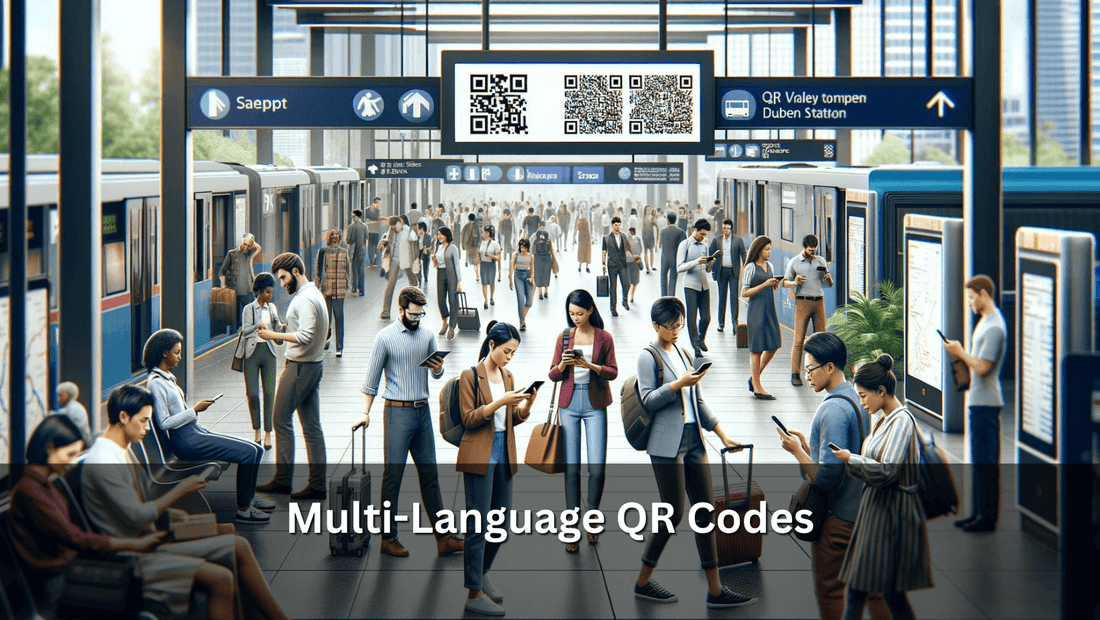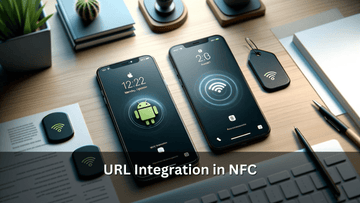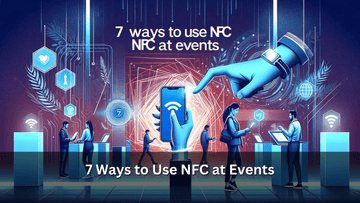Multi-Language QR Codes

Contents
- 1- Why QR-smart public transport is gaining traction
- 2- How QR codes for transportation work
- 3- How to create QR codes for public transportation
- 4- Multi-language QR codes: Bridging the language gap
- 5- Why public transport QR codes are a wise investment
- 6- Benefits of QR codes for transportation for authorities:
- 7- Challenges and solutions in implementing multi-language QR codes
QR Codes for Transportation: Public Transport Made Simple
Why QR-smart public transport is gaining traction
QR code technology is revolutionizing public transport systems globally, enhancing efficiency and user experience. Here’s why they're becoming more prevalent:
Efficiency: QR codes reduce the time spent on ticket purchases and validations, allowing passengers to scan and board quickly, minimizing lines and wait times.
Cost Savings: By eliminating physical tickets, QR codes help transit authorities save on printing and distribution costs, streamlining operations and reducing waste.
Security: With advanced encryption, QR codes offer improved security over traditional paper tickets, helping prevent fraud and unauthorized use.
Data Insights: The technology enables the collection of data on travel patterns, assisting in optimizing routes and schedules to better accommodate passenger needs.
Environmental Impact: QR codes support sustainability by cutting down on paper usage, aligning with environmental goals of reducing waste.
Accessibility: Supporting multiple languages, QR codes make public transport more accessible to tourists and residents alike, enhancing inclusivity.
These factors contribute to the increasing adoption of QR-smart technology in public transportation, as cities seek to modernize and improve their transit systems efficiently and securely. For more detailed insights into how QR codes are integrated into public transportation ticketing and scheduling, you can visit EpicBrander.
How QR codes for transportation work
QR codes in transportation streamline the ticketing process, making it quicker and more convenient for passengers. Here’s a general overview of how they operate:
Passengers can purchase their tickets online through an app or a website. Once the purchase is made, the ticket is transformed into a QR code, which is either saved to the user’s device or can be printed out. At the transit entry point, scanners are prepared to read these QR codes. Passengers simply present their QR code, which is quickly scanned to validate the ticket. Upon successful scanning and validation, passengers are granted access to the platform or vehicle. This efficient process reduces the need for physical ticket checks, speeding up boarding times and improving the flow of passengers during peak hours. Additionally, each scan contributes to data collection on travel patterns and frequencies, aiding transit authorities in better service planning and resource allocation.
This QR-based system not only enhances security but also reduces costs associated with physical ticketing, thereby improving the overall efficiency of public transportation operations.
How to create QR codes for public transportation
Creating QR codes for public transportation involves a few straightforward steps:
-
Choose a QR Code Generator: Select a reliable QR code generator that supports dynamic QR codes, essential for updating information without changing the QR code itself.
-
Input Data: Enter the necessary information that the QR code will contain. This could be a URL linking to a ticket purchase confirmation or travel details.
-
Customization: Customize the QR code to include specific colors, logos, or other design elements that align with the branding of the transportation authority.
-
Testing: Before rolling out the QR code, it’s crucial to test it extensively to ensure it scans correctly and directs to the correct information.
-
Deployment: Once tested, deploy the QR code across relevant platforms. This might include digital ticketing apps, physical posters at stations, or even direct emails to passengers.
-
Monitoring and Updates: Continuously monitor the QR code's performance and update the encoded information as needed to ensure accuracy and efficiency.
This process ensures that the QR codes are effective in facilitating a smooth and streamlined public transportation experience.
Multi-language QR codes: Bridging the language gap
Multi-language QR codes significantly enhance the accessibility of public transport systems for tourists and non-native speakers by bridging the language gap. These QR codes dynamically adjust the displayed information based on the user’s language preferences, which can be set manually or detected automatically through the device settings. This feature not only simplifies navigation through complex transport networks but also improves the overall user experience, making travel more inclusive and friendly. By providing essential information like schedules, routes, and fares in multiple languages, multi-language QR codes ensure that all passengers can navigate public transportation systems with ease and confidence.
Why public transport QR codes are a wise investment
Investing in QR codes for public transport systems offers numerous advantages that justify their implementation:
Cost Reduction: QR codes significantly lower the costs associated with the production and distribution of traditional paper tickets. By digitizing ticketing processes, transit authorities can save on printing, handling, and disposal expenses.
Operational Efficiency: QR codes streamline the entry and validation process, reducing bottlenecks and speeding up passenger flow at stations. This efficiency not only improves the passenger experience but also increases the capacity of the system during peak times.
Enhanced Data Analytics: The use of QR codes enables the collection of detailed data on passenger movements and preferences. This information is vital for optimizing routes, schedules, and overall transit planning, leading to a more responsive and efficient service.
Improved Security: QR codes can be encrypted, enhancing the security of the ticketing process. This reduces the risk of fraud and unauthorized use, ensuring revenues are protected and accurate.
Environmental Benefits: Shifting to a digital ticketing system helps reduce paper waste, contributing to the environmental sustainability goals of public transportation entities.
Inclusivity and Accessibility: With QR codes, authorities can offer tickets in multiple languages and formats, catering to a diverse user base, including tourists and people with disabilities. This inclusivity makes public transport more accessible to everyone.
Future-Proofing: As technology evolves, QR codes keep public transport systems modern and adaptable to new innovations like mobile payments and integrated transport apps.
These benefits make QR codes a smart and strategic investment for public transport systems looking to improve efficiency, security, and passenger satisfaction. For further details on the implementation and benefits of QR codes in public transportation, you can visit Supercode.
Benefits of QR codes for transportation for authorities:
Cost-effectiveness QR codes eliminate the need for physical ticket materials and processing, significantly reducing costs related to printing, distributing, and handling traditional tickets, thereby providing a more economical option for transit authorities.
More streamlined passenger flow QR codes speed up the entry process at transit stations, reducing queues and wait times. This efficiency enhances the overall flow of passengers, making the system more fluid and less prone to congestion.
Faster boarding process By allowing passengers to board with a simple QR code scan, the boarding process becomes much faster and more efficient. This reduces delays and increases the turnover rate of transit vehicles, enhancing schedule adherence.
Inclusivity QR codes can be designed to include features that cater to a diverse user base, such as information in multiple languages and formats suitable for passengers with disabilities, thus making public transportation more accessible to everyone.
Data collection and analytics The integration of QR codes enables transit authorities to collect valuable data on usage patterns and passenger preferences. This information is crucial for optimizing routes, adjusting schedules, and making informed decisions about service improvements.
Environmental benefits Switching to QR codes reduces the reliance on paper-based systems, cutting down on waste and promoting a greener approach to public transport. This aligns with broader environmental sustainability goals by minimizing the carbon footprint of transit operations.
Security QR codes enhance security by reducing the risk of ticket forgery and loss. Encrypted QR codes provide a secure means of verifying passenger tickets, protecting revenue and ensuring only legitimate ticket holders can access services.










